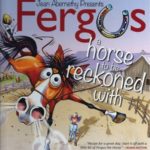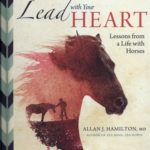The black mask. The white horse. The silver bullet. The William Tell Overture. Any one of these, let alone the whole package, only means one thing: the Lone Ranger. First appearing in a radio series in 1933, the Lone Ranger turns 80 this year, but he’s forever young to us. Though fictitious, this Texas Ranger may as well be real, given his larger-than-life status as an icon of the Wild West. “Hi-yo Silver!” and “Who was that masked man?” are cultural catchphrases that most anyone recognizes. And his story has been told and retold on radio, on television, in film, in comics, each time drawing in a new generation of Americans. This summer the beloved Western hero comes to life once again in a summer blockbuster from Disney. “The Lone Ranger, which opens in theaters nationwide July 3, 2013. Armie Hammer, 27, the lead actor who plays the Lone Ranger, and I spoke about the film recently. Though he’s played iconic men before, like the CIA’s Clyde Tolson in Clint Eastwood’s J. Edgar (2011) and evangelist Billy Graham in Billy: The Early Years, (2008) and the Winklevoss twins from The Social Network (2010) Hammer is well aware that this role is much more significant. “The time for the virtuous great American hero is back,” he says about filling some cowboy boots of mythic proportions. Our 21st-century sensibilities also allow for this retelling of Kemosabe to be narrated through the eyes of the ultimate sidekick, Johnny Depp, 50, as Tonto.

The Lone Ranger got his start during the Great Depression, when the character debuted on Detroit radio station WXYZ in 1933. The product of George Trendle and Fran Striker, his story eventually became one of, if not the most, well known of any Old West lawman, factual or fictional. The sole survivor of a deadly ambush by outlaw Butch Cavendish, this Texas Ranger is nursed back to health by an American Indian named Tonto. The two band together to seek justice, with the Lone Ranger concealing his identity behind his signature black mask. The show was an immediate and resounding success. “Radio was theater of the mind,” says David Rothel, author of Who Was That Masked Man? The Story of the Lone Ranger (A.S. Barnes and Co., 1981). “You could see in your mind horses going over a wooden bridge. You had a feel of the adventurous Old West.”
From their earliest days, the Lone Ranger and Tonto showed unwavering commitment to a code of conduct that resonated with audiences. They always did the right thing, stood up for justice, and never shot to kill. Their unique combination of vigilante justice and uncompromising morality was something that listeners, and later viewers, recognized as the Cowboy Way. It’s a theme that has continued to speak to fans generation after generation.
Christopher Langley, executive director and historian at the Lone Pine Film History Museum, says, “I think we, as an American culture, have really identified with that. The lone savior and his sidekick standing up for the community against the bad guys, fighting for what’s right. To square things that are wrong. That really appeals to us.” Heroes who, no matter what, have a code of behavior and follow it. They stand up against the enemy, even if they have to do it alone.”
Hammer agrees, saying that the character’s popularity is not just about hero worship. He’s a hero that fits into and helps define the West.
“It’s true Americana,” says Hammer. “Everything is 100 percent on you. You are free in a way that people in other places, in other countries, don’t understand. You have the freedom to be the good guy or bad guy if you choose, and because you have that, you choose to do the responsible thing, and sometimes you’re tested. It’s the true American West we all love.”
This love affair with the Lone Ranger has allowed the hero to be continually reborn. The radio series eventually aired nearly 3,000 episodes, which begot two late-1930s film serials. But it was the launch of the television show in 1949, starring Clayton Moore (1914-1999) as the Lone Ranger and Jay Silverheels (1912-1980) as Tonto, that catapulted the Lone Ranger into popular consciousness.
It ran for eight seasons, until 1957, and became the first appointment television, for kids at least. Despite more recent adaptations, Moore and Silverheels remain the singular characters. Much like the who’s-the-better-James-Bond debates (Roger Moore vs. Sean Connery), those who have played the masked man–John Hart, Chad Michael Murray, Lee Powell, and John L. Barrett–are mere afterthoughts next to Clayton Moore.
Most of the early versions were filmed on sound stages, though significant portions of the late-1930s serials and the Moore/Silverheels television series were filmed on location, including California’s Lone Pine and the Alabama Hills. For this summer’s Disney version, director Gore Verbinski shot on location in Southern California and in locales spanning four Southwestern states: New Mexico, Monument Valley on the Arizona-Utah border, and Colorado. He also built two full-size Old West towns south of Albuquerque and constructed more than five miles of railroad track for accommodating two 250-ton trains.
“We tried to put people on trains and on horses and in the dirt,” explains Verbinski.
Boss Wrangler Clay Lilley of Movin’ On Livestock provided all the horses for the film, doing stunt work and training the actors to look the part of authentic cowboys. Lilley has performed similar duties for many feature films and TV shows, including Cowboys and Aliens (2011), The Legend of Zorro (2005), City Slickers (1991), and The Magnificent Seven (1998?2000), to name a few.
Before production on the movie began, Lilley organized a three-week cowboy boot camp for getting the actors up to speed. They all needed instruction and experience with the finer points of horsemanship and all things cowboy.
“They said, ‘We’re gonna beat the city out of you,’ and they did,” Hammer told a Las Vegas audience at a recent showing.
Lilley’s cowboy boot camp taught actors how to ride horses, how to hit a mark, how to mount and dismount, and how to handle a saddle, bedroll, and saddlebags. Another cowboy taught the actors how to gun sling and look natural with firearms. He may have been working with Hollywood (sometimes known for taking creative license with details), but Lilley was meticulous about having the movie reflect authentic life in the West.
“It’s very important,” he says. “I know that my dad and several guys–old cowboys I grew up around–notice this stuff, the subtle things most people don’t understand. When you’re raised around horses all your life, you want to make sure you uphold the Cowboy Way.”
Hammer immediately connected with Lilley and respected his perspective. “It’s the very best,” he says. “It’s the same thing you encounter with a ranch hand in south Texas or a dairy farmer in Vermont: honest people, working the land, living off the land. There’s a sense of respect and no wasted words.”
But how do you compare fictitious characters, like the Lone Ranger and Tonto, to real-life lawmen like Wyatt Earp, Bat Masterson, and actual Texas Rangers such as Captain Jack, John Armstrong, and Ira Aten?
“These were some of the toughest and baddest men who ever walked the surface of the Earth,” says Hammer. “You might have been the only person within hundreds of miles willing to stand up to a group of marauders. It was a serious call to duty. And inspiring to see that strength.” For Hammer, the Lone Ranger absolutely stands alongside such company, a Texas Ranger to the core.
Christina Stopka, deputy director of the Texas Ranger Hall of Fame and Museum in Waco and head of the Armstrong Texas Ranger Research Center, adds: “The Texas Rangers have always been small in number. [They are] the small or the few against overwhelming odds, who somehow manage to come out on top. The Lone Ranger is an ideal of that but a fictitious one. For him, there was always a positive outcome; in real life, that wasn’t always the case.”
Lone Pine’s Langley agrees. “I think the Lone Ranger was and is a symbol more than a real person. I don’t think there was a perfect person, especially a law enforcement person, in the Old West. It’s what we want our world like, our children like, for us to act like. It’s hard to act moral and ethical and consistent with what we believe every day. And so we consistently hold up these characters.”
At the end of the day, the Lone Ranger delivered a consistent moral message that his real-life counterparts couldn’t always: If you do wrong, you will get caught, and you will be brought to justice.
“He isn’t doing it for personal gain, not for ego reasons, or fame or fortune or women,” says Langley. “His motivations are purely to do the right thing.”
One thing is clear, “This is not your father’s Lone Ranger,” says Langley.
“Hammer’s new Lone Ranger does not wear the powder blue, super hero-like getup of Clayton Moore. And more importantly, you’re going to be surprised by the movie,” says director Gore Verbinski, “because we’re telling the story from Tonto’s perspective.”
That’s a major shift in the storytelling, but one that’s not without precedent. Over the years, the Lone Ranger story has evolved to suit each generation and the whims of the storytellers. The 1930s serial, for instance, started with several Texas Rangers, each one of them killed off in subsequent episodes, until only one–the lone ranger–remained standing at the end.
The evolution of the storytelling is important, says author David Rothel, because the Lone Ranger has to connect with the audience of his time. “We live in a very different era now, when our heroes are not so true-blue, as we might have called them years ago,” he says. “Maybe the present generation will re-love the Lone Ranger or discover him for the first time.”
Indeed, Disney spent $250 million on this film to make that come true.
“For diehard fans, they will see the movie and recognize the story from their childhood but with a great modern twist for the next generation, who will now learn about it,” says Hammer.
In other words, the Lone Ranger lives on, perhaps another 80 years.
“It’s our mythology,” says Langley. “It gives us a national identity. I don’t know what kids will do with this movie. But [this story] has been repeated and repeated, and that says something. We respond to that sense of heroes standing alone. It’s romantic. It reverberates in our hearts and minds.”
The staying power of the original story reverberates at the Texas Ranger Hall of Fame and Museum’s Lone Ranger collection and exhibition, which has nearly 2,500 items, from a Clayton Moore mask to Hallmark Christmas ornaments. Much of popular culture may have moved on, but not here. The Cowboy Way is still alive on the ranches of America, and Western movies remind us that we all need heroes to understand what’s important. The Lone Ranger has done his part, giving life to our better selves for eight decades now. Here’s to hoping his example continues to inspire for eight more.








